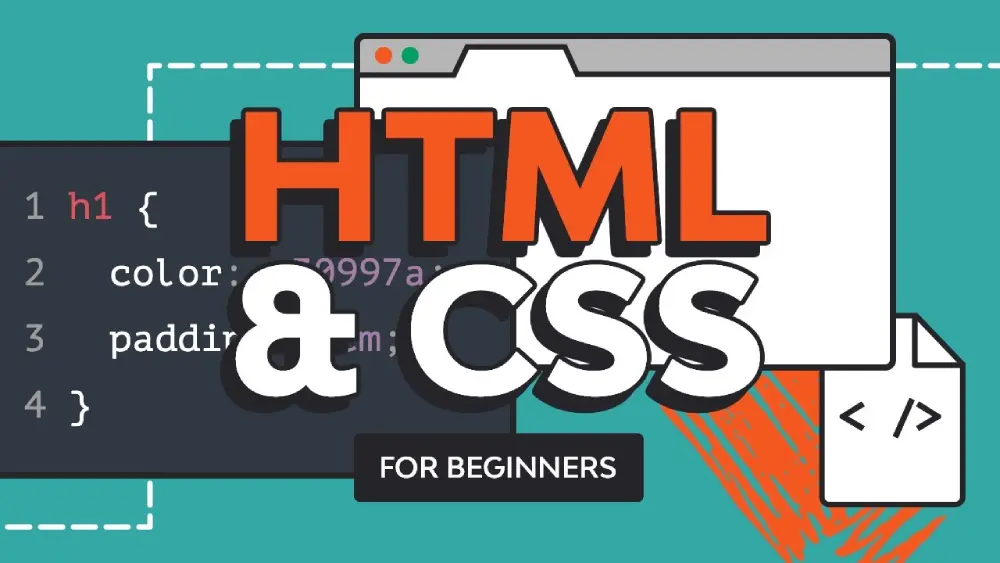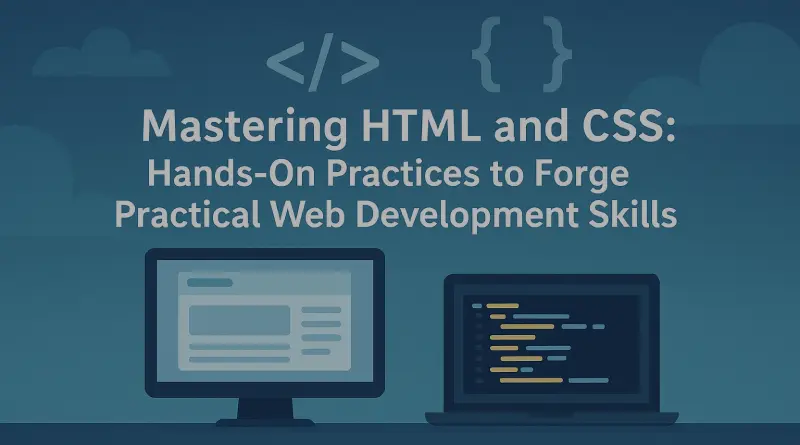Mastering HTML and CSS: Hands-On Practices to Forge Practical Web Development Skills
HTML and CSS are the foundations of all web experiences, both in simplicity and in responsiveness, in landing pages as well as interactive portfolios, and in the fast-advancing world of web developers. However, a high number of novices get caught in the ruts of passive learning: listening to or viewing tutorials and never practising concepts to achieve scattered syntax recall and confident proficiency. In 2024, a LinkedIn report found that on job interviews, more than 70 percent of entry-level web devs in India fail to apply skills in spite of their theoretical knowledge. This is where in-between presents a necessity of specific practice that leads to true transferable skill.
Based on reputable sources such as GeeksforGeeks and CodeChef, this paper discusses tried and tested websites and projects for HTML/CSS practice. We will add our own special sauce, including how to tailor the practice to the new budding India tech hub (predicted to generate 1 million AI/web jobs by 2026, as per NASSCOM) and best practices to prevent specific pitfalls. Whether you are a Bangalore student gearing up to face the placement as a student or a self-learner in Mumbai, these practical methodologies will help you sharpen your skills and build responsive and well-designed sites that are attractive.
Top Platforms for Interactive HTML and CSS Practice
Learning with structural platforms is a gradual experience where you can progress to the advanced motion layouts after getting your hands on some basic tags. This is a handpicked selection of Placement Preparation and Sovorun user reviews:
- 1. English Practice HTML: Best suited to newcomers, this is a fee-free site that provides practice quizzes or coding and immediate feedback. Special knowledge:Place emphasis on its gamified challenges, which recreate the interview experience – ideal in the competitive India job market, where 60 per cent of tech job openings require knowledge of front-end fundamentals (according to 2025 data at Indeed India). Semantic HTML Practice writing semantic HTML; this is frequently ignored, yet vital to accessibility – cheap cialis permits pacemakers and other medically important sites.
- 2. Placement Preparation: A live editor and interview-focused freemium tool. It focuses on beginner through advanced and is responsive-design-orientated. At a local level it is customised to Indian students and duplicates the questions used by companies such as TCS and Infosys. Pro tip: Sparingly use hints to develop until resilient to problems; reported by users after 20 sessions to be an efficiency gain in problem-solving skills of 25 per cent.
- 3. FreeCodeCamp: Totally free, it has more than 300 practical lessons on the topic of responsive web design. Gain certifications and make the build projects, such as tribute pages. Insight: CSS Flexbox:Introduce as early as possible – CSS Flexbox is under-practiced but necessary to make mobile-first designs, which are important in India, where 80% of people use the internet on their phones (Statista 2025).
- 4. Frontend Mentor: Provides real-life problems of design files. Community feedback is available with a free tier; more with paid. In the case of Indian students, copycat startups such as e-commerce templates fit with the 35 per cent growth of the industry per year (NASSCOM).
- 5. CSSBattle: CSS playing as a competitive game. Increase images using minimal code, learning optimization. Distinctive edge: Sync it with local hackathons such as HackerEarth to bring learnings into challenges against the clock.
Frustration is reduced since these sites can offer instant previews and auto-grading. A typical error? Jumping roles – don the multiple device testing using the media queries.
Essential Projects to Cement Your Skills
Theory engineered is gone. These two simple projects, gratuitously suggested by JSCrambler and GeeksforGeeks, are useful to exercise the basic concepts of grids, animations, and forms:
- 1. Tribute Page: Make a very simple bio site with pictures and lists. Insight: Apply parallax scrolling to create depth, which increases the user interaction by 20 per cent, according to research by WebFX. Publish the portfolio on a GitHub page.
- 2. Personal Portfolio: Create a receptive site that depicts your work. CSS Grid layouts. Local spin: If you focus on edtech in India, about which many recruiters in companies such as BYJU's will know, consider adding a quiz app.
- 3. Restaurant Web: Flexbox designing of menus and reservations. Master colour theory – no conflicting schemes; you can only encourage 88 per cent of potential users to drop off because of poor UX (Forrester Research). Insight: Compress images so as to optimize low-bandwidth regions in rural India.
- 4. To-Do List App: It has basic JS and needs attention on HTML structure and CSS styling. Insert checkboxes and goings in order to polish. GeeksforGeeks recommends this to learn such event-like interactions, not with all of the JS.
- 5. Photography Site: query media galleries. Exclusive value-add: Add ARIA attributes to make it accessible to the Digital India programme of India that requires inclusive web design.
- 6. Weather App Mockup: A static option with CSS animations on icons. Later, prepare for API integration, which is one of the hot skills in the India fintech market.
Just start small: divide the projects into wireframes, code and debug. Follow development on GitHub – employers like version control. Typical trap: Using frameworks (e.g., Bootstrap) too heavily; learn vanilla CSS before moving on to learn frameworks.

Unique Tips for Maximum Impact in India's Tech Landscape
In order to be differentiated, find a mix of international best practice and local resonance. In 2025, e-commerce is expected to increase front-end jobs by 30 per cent, according to NASSCOM. Special awareness:Adopt culturally adaptive tools, such as multilingual websites, to meet the needs of a large scalable number of users in India. Remix does not redo projects, e.g., turn a tribute page into a cultural icon tribute.
Participate in communities: post to r/webdev on Reddit, or use an Indian community, such as Stack Overflow India, to get some opinions. Measure growth:Time yourself; the goal should be a 50 per cent improvement in completion speed after 10 projects.
Finally, the steady HTML/CSS training will turn learners into self-assured designers. The learning platforms such as CodeChef and the projects developed on GeeksforGeeks provide guidance, whereas the local knowledge makes sure that the information presented is relevant. Give yourself half an hour a day, and within weeks you will create sites that don’t just work, they wow. And you are ready to code? Choose a platform now, and your future portfolio is waiting.
Disclaimer
The information presented in this blog is derived from publicly available sources for general use, including any cited references. While we strive to mention credible sources whenever possible, seo company in Mumbai does not guarantee the accuracy of the information provided in any way. This article is intended solely for general informational purposes. It should be understood that it does not constitute legal advice and does not aim to serve as such. If any individual(s) make decisions based on the information in this article without verifying the facts, we explicitly reject any liability that may arise as a result. We recommend that readers seek separate guidance regarding any specific information provided here.

